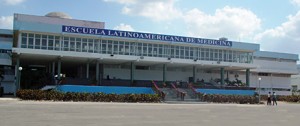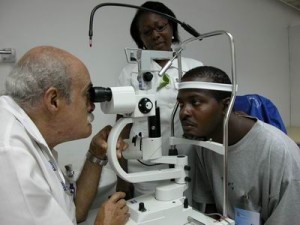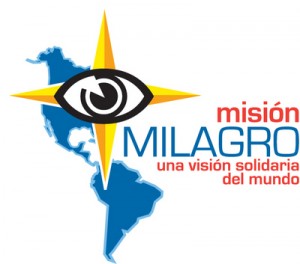Cuba’s Commitment to International Healthcare
May 4, 2012 by admin
Cuba is internationally renowned for its excellent healthcare system and for having the world’s highest number of doctors per capita (almost 6 per 1,000 people).[1] In recent years, Cuba has managed to turn its excellent healthcare system into yet another means of generating revenue, both through healthcare tourism and through deals like the Oil-for-Doctors arrangement with Venezuela. But even with the significant changes Cuba has experienced over the last two decades, the healthcare system is still one of the bastions of revolutionary idealism, particularly in its approach to education. Created in 1999, the Latin American School of Medicine (ELAM) is one of the largest medical schools in the world and trains both Cubans and foreign students to serve as doctors in underprivileged areas.
The Cuban government covers all expenses for students attending ELAM, with the condition that graduates are “expected to make a commitment to serve in underserved communities – their own or another – upon graduation.”[2] In 2010, over 21,000 students from 100 different countries were enrolled at the school’s multiple campuses throughout Cuba, including 117 from the U.S.[3] It seems remarkable that the Cuban government would pay to train students from the U.S. but it also demonstrates the depth of Cuba’s commitment to its international humanitarian mission. ELAM is just one part of Cuba’s mission to create sustainable healthcare systems similar to its own in other developing countries. According to the school’s website, “The Cuban premise is that medicine as merchandise has not – and will not – guarantee health for the world’s poor majorities; health as a human right must be guaranteed by health professionals who believe the same, and who are willing to make sacrifices to make it possible.”
In pursuit of this goal, Cuba has consistently sent medical personnel to countries around the world both to help develop healthcare systems and train doctors as well as in response to specific events such as natural disasters. Cuban doctors were sent in large numbers to Haiti after the devastating 2010 earthquake there, to Pakistan following the multiple earthquakes there over the last decade and to Indonesia after the 2004 tsunami. Cuban disaster relief missions tend to stay in the affected countries much longer than teams from other countries, like the U.S. In Pakistan and Haiti, for example, Cuban doctors “stayed on after other disaster relief teams had left to provide preventive and curative care” and created dozens of field hospitals, some of which cost Cuba several hundred thousand dollars each to establish and run.[4]
Cuba has also partnered with Venezuela to create a program called Operación Milagro, which sends Cuban ophthalmologists to countries throughout Latin America to perform eye operations. The idea behind the program is that eye problems and blindness are some of the most debilitating yet often relatively easily fixed problems that affect people in underdeveloped countries. So far, the program has performed over 1.8 million free operations and, as a result of this success, the program is being expanded to Africa, with the recent creation of two eye clinics in Angola and Mali (Feinsilver).
Even though part of Cuba’s goal in sending out disaster relief teams, creating Operación Milagro and running the Latin American School of Medicine is political and intended to generate international sympathy against the United States embargo, it’s difficult to take issue with a government that is willing to spend so much of its own money providing healthcare in places where it is badly needed. Cuba’s strong example of humanitarianism has dramatically increased its international prestige and provides an example that other countries, especially wealthy nations like the U.S., should notice and not simply dismiss as propaganda campaigns.
[1] http://www.nationmaster.com/graph/hea_phy_per_1000_peo-physicians-per-1-000-people
[2] Medical Education Cooperation with Cuba, “Cuba & the Global Health Workforce: Training Human Resources,” http://www.medicc.org/ns/index.php?s=10&p=0
[3] Don Fitz, “The Latin American School of Medicine Today,” Monthly Review, http://monthlyreview.org/2011/03/01/the-latin-american-school-of-medicine-today#en22
[4] Julie M. Feinsilver, “Fifty Years of Cuba’s Medical Diplomacy: From Idealism to Pragmatism,” Cuban Studies, vol. 41 (2010), 90.
Leave a Reply
You must be logged in to post a comment.


